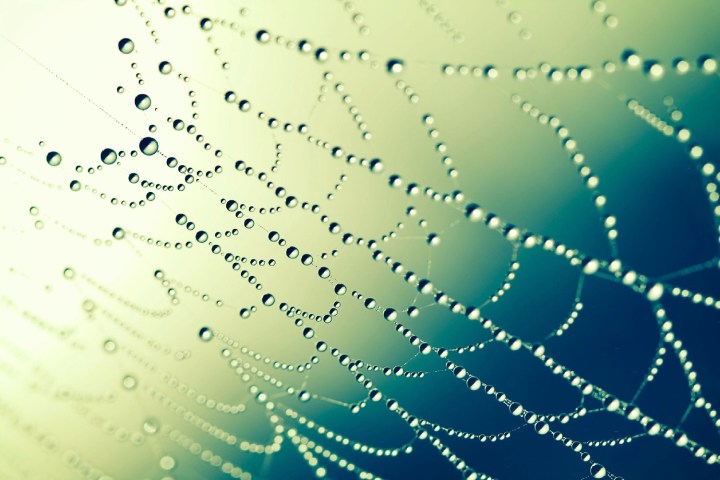
Ultra-sensitive spider silk is capable of picking up the velocity of air instead of just its pressure. Because it is so thin, it can move with the air when hit by soundwaves, receiving infrasound at frequencies as low as just 3 hertz. To put that in perspective, it’s like hearing tectonic plates moving during an earthquake. The spider silk could actually be so good for hearing that spiders use it, when spun into webs, for listening to what is taking place around them.
The Binghamton researchers have found a way to translate this ability to pick up the direction of airflow into an electronic signal that can be used in microphones. This involves coating the spider silk with gold, and then placing it in a magnetic field to obtain an electronic signal — thereby making it into a makeshift microphone that can operate across an impressive range of frequencies.
“This provides an alternate way to make microphones that will enable directional microphones to be incorporated in hearing aids and other small devices, that will sound dramatically better than those that exist today,” Ronald Miles, a professor in Binghampton’s department of mechanical engineering, told Digital Trends. “Today’s miniature directional microphones sound bad because their response varies strongly with frequency. They tend to lose low-frequency sounds and respond mostly to very high-frequency sounds. Our technology will enable the creation of directional microphones that have audiophile quality. We’ve shown that their frequency response is flat from 1 Hz to 50 kHz. This has not been possible until now.”
While it’s still a work in progress, the researchers have already built prototypes and made recordings to show that their web-based technology works effectively. According to Miles, the tech could be incorporated into any system that uses small microphones, such as hearing aids, cell phones, and computers. Since around 2 billion microphones are sold each year, and nearly all portable electronic gadgets contain one or more, this could turn out to be a major development. A paper describing the work was recently published in the journal Proceedings of the National Academy of Sciences.
Between this work, its application in helping nerves regrow after damage, and its role as super-strong shields, spider silk may well have our pick as 2017’s most exciting material.


